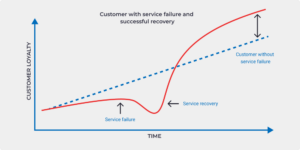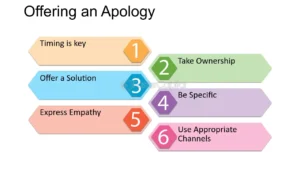Mistakes are inevitable. A delayed shipment, a defective product, or a miscommunication with a customer can lead to a tidal wave of negative reviews, lost sales, and a damaged brand reputation. But it’s not the mistake itself that can be the death knell for your business – it’s how you respond to it. A well-crafted apology can be the difference between salvaging a customer relationship and watching it go up in flames. Yet, many e-commerce businesses struggle to apologize effectively, often resorting to generic, insincere statements that only fuel customer frustration. In this post, we’ll explore the art of e-commerce apologies, providing you with a roadmap to craft meaningful apologies that not only soothe customer frustrations but also help to build trust, loyalty, and ultimately, save your brand.
Why apologies matter in e-commerce

Apologies matter because they show empathy, accountability, and a commitment to making things right. In an era where online reviews and social media can make or break a brand, a sincere apology can be the key to turning a negative experience into a positive one. Here’s why crafting a well-structured apology is crucial for your e-commerce business:
Retains customer trust: A genuine apology demonstrates that you value your customers and their business. It shows you’re willing to take responsibility for your mistakes and work towards resolving them.
Minimizes negative reviews: A disgruntled customer might be more forgiving after receiving a sincere apology and seeing your efforts to make things right. This can prevent negative online reviews that can damage your brand reputation.
Builds customer loyalty: When you handle mistakes well and go the extra mile to rectify them, you can actually strengthen your relationship with your customers. They’ll appreciate your commitment to customer satisfaction and are more likely to return for future purchases.
The anatomy of a good apology

When it comes to apologizing to customers, it’s not just about uttering the words “I’m sorry” and expecting forgiveness. A genuine apology requires a thoughtful and structured approach that acknowledges the customer’s frustration, takes responsibility for the mistake, and offers a tangible solution. A good apology is like a well-crafted puzzle, with each piece carefully fitted together to convey empathy, accountability, and a commitment to make things right.
1.Acknowledge the mistake: Don’t try to downplay the issue. Start by clearly acknowledging the mistake and expressing your understanding of how it impacted the customer.
Example: “We sincerely apologize that your recent order arrived damaged. We understand the frustration this must have caused.”
2.Express sincere regret: Convey genuine remorse for the inconvenience or disappointment caused to the customer.
Example: “We are truly sorry for this experience and the impact it has had on your trust in our company.”
3.Outline the resolution: Clearly explain the steps you are taking to rectify the mistake. This could involve a replacement product, a refund, or a store credit.
Example: “We have already processed a full refund for your damaged product and a replacement is on its way to you with expedited shipping.”
4.Take ownership and responsibility: Avoid shifting blame or making excuses. Own the mistake and show the customer that you’re taking steps to prevent similar situations in the future.
Example: “We are reviewing our packaging procedures to ensure this doesn’t happen again and that all products arrive safely in the hands of our valued customers.”
5.Offer a token of appreciation (Optional): Consider offering a token of appreciation for the customer’s patience and understanding. This could be a discount code for a future purchase or a complimentary gift with their next order.
How to follow up and follow through
The art of apology is not just about saying sorry, but also about following up and following through on those promises. It’s the difference between a hollow apology and a genuine attempt to make things right. When a customer has been wronged, they’re not just looking for a quick fix, but a long-term solution that rebuilds trust and confidence in your brand. That’s why it’s essential to have a clear plan in place for following up and following through on your apologies. This means checking in with the customer to ensure the issue has been resolved to their satisfaction, and making any necessary adjustments to prevent similar issues from arising in the future. It’s about being proactive, rather than reactive, and demonstrating a genuine commitment to customer satisfaction.
Additional tips for effective e-commerce apologies
Act quickly: Don’t wait days to address the issue. The sooner you reach out with an apology, the better.
Personalized approach: Whenever possible, personalize your apology. Address the customer by name and tailor your message to the specific situation.
Multiple channels: Consider reaching out through various channels, such as email and phone, depending on the customer’s preference.
Learn from mistakes: Use every apology as a learning opportunity. Analyze what went wrong and implement changes to prevent similar issues in the future.
Conclusion
In the fast-paced world of e-commerce, mistakes are inevitable, and apologies are a necessary evil. However, a well-crafted apology can be the difference between a one-time mistake and a long-term loss of customer trust. Mastering the art of apologizing, can turn a negative experience into a positive one, salvage your brand’s reputation, and even build a loyal customer base. Remember, apologizing is not a sign of weakness, but rather a sign of strength and commitment to customer satisfaction. The strategies outlined in this post, can ensure that your brand’s apologies are not just empty words, but a genuine expression of remorse and a promise to do better. So, the next time you need to say sorry, make it count, and watch your customers respond with loyalty and appreciation.

